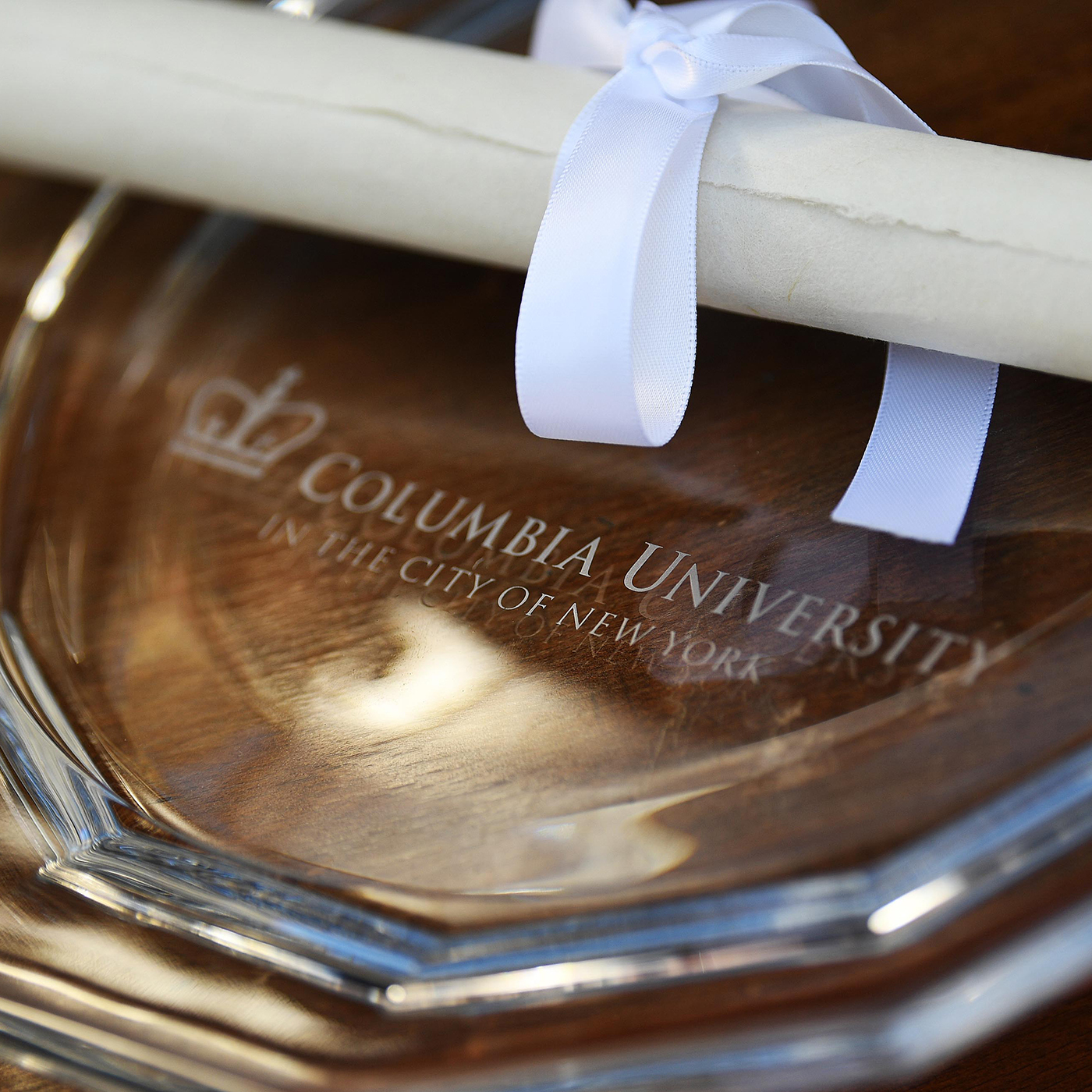Yale University vs. Harvard University:
When it comes to elite higher education in the United States, few institutions command as much respect and admiration as Yale University and Harvard University. Both are Ivy League schools with storied histories, world-class faculty, and alumni networks that span the globe. But for prospective students, educators, and anyone interested in the dynamics of top-tier education, choosing between these two giants is no simple task. This article offers a thorough comparison of Yale and Harvard, examining their similarities, differences, and what each institution brings to the table in the broader context of higher education.
Background Information
Harvard University, founded in 1636, is the oldest institution of higher learning in the United States and has long been a symbol of academic excellence. Located in Cambridge, Massachusetts, Harvard’s legacy includes over 160 Nobel laureates, countless influential politicians, and leaders across various industries. Its influence on higher education is profound, with its curriculum, research, and alumni shaping the world in countless ways.
Yale University, established in 1701 in New Haven, Connecticut, shares a similarly prestigious reputation. Known for its strong emphasis on the liberal arts, Yale has produced five U.S. Presidents and numerous Supreme Court justices, contributing significantly to the nation’s intellectual and cultural heritage. The university’s traditions, like its residential college system and renowned drama and music programs, make it a distinctive choice for students seeking a more intimate academic environment.
Admission Process and Selectivity
Both Yale and Harvard are known for their rigorous and highly selective admissions processes, which can be a daunting hurdle for prospective students. Harvard’s acceptance rate typically hovers around 3-5%, while Yale’s is slightly more lenient but still competitive, at around 4-6%. Both institutions require prospective students to submit a detailed application that includes SAT or ACT scores, high school transcripts, letters of recommendation, and a personal essay. However, each university also has unique requirements: for instance, Harvard places significant emphasis on extracurricular achievements and leadership qualities, whereas Yale values intellectual curiosity and contributions to the community.
The choice between applying early decision or regular decision can significantly impact a student’s chances of acceptance. Early decision at both universities tends to have a higher acceptance rate, but it also comes with a binding commitment to attend if accepted, which adds another layer of complexity to the decision-making process. The admissions essays for each university also offer insight into what they value; Harvard’s prompts often encourage students to reflect on their achievements and aspirations, while Yale’s questions invite applicants to delve into their personal values and the community they hope to join.
Financial Aid and Affordability
One of the most critical factors for many students when choosing between Yale and Harvard is the financial aid packages they offer. Both universities have a need-blind admissions policy, which means they do not consider an applicant’s financial situation when making admissions decisions. Additionally, both schools meet 100% of demonstrated financial need, which can make attending these prestigious institutions more affordable than it might initially seem.
Harvard has one of the largest endowments in the world, allowing it to offer generous financial aid packages. For example, families with incomes below $65,000 are not expected to contribute to the cost of attendance, and those with incomes between $65,000 and $150,000 may only contribute a small percentage of their income. Yale’s financial aid is similarly generous, with need-based grants that do not require repayment. Both schools cover not just tuition, but also room, board, and other expenses, making it possible for students from a wide range of economic backgrounds to attend.
However, the total cost of attendance at both universities, including tuition, fees, and living expenses, is still a significant consideration. For some students, the choice may come down to the specifics of each financial aid offer, including any merit-based scholarships or special grants that might be available. Comparing these financial details is crucial for making an informed decision.
Residential Life Beyond the Classroom
Yale’s residential college system is one of its most distinctive features, offering a unique living-learning environment that helps foster a close-knit community. Each of Yale’s 14 residential colleges functions like a smaller community within the larger university, providing students with a more intimate setting to engage academically and socially. Students live in their college for all four years, which creates strong bonds and a deep sense of belonging. These colleges offer dining halls, libraries, and various social spaces, all of which contribute to a vibrant campus life.
In contrast, Harvard’s residential system is slightly different. First-year students live in dormitories in Harvard Yard, after which they are assigned to one of the university’s 12 houses. While similar in function to Yale’s residential colleges, Harvard’s houses are larger and more diverse, offering a wide range of activities, from intramural sports to academic advising. Harvard’s proximity to Boston also offers students a wealth of cultural and professional opportunities outside the university, providing a more urban living experience.
Both universities offer a rich array of extracurricular activities, including clubs, organizations, and student government. However, the culture and focus of these activities can differ. Yale is known for its strong traditions in the arts, particularly in theater and music, with students often involved in productions and performances. Harvard, meanwhile, offers a broader range of activities, with a strong emphasis on leadership and public service, reflecting its proximity to political and economic centers in Boston and beyond.
Academic Culture and Teaching Styles
The academic experience at Yale and Harvard is shaped by their respective teaching styles and academic cultures. Harvard is particularly renowned for its use of the case study method, especially in its business and law schools. This approach involves students in practical, real-world problem-solving, making it an ideal environment for those interested in careers that require strategic thinking and leadership. Harvard’s large lecture courses are often complemented by smaller discussion sections, allowing students to engage more deeply with the material.
Yale, on the other hand, is known for its strong emphasis on small, seminar-style classes, particularly in the humanities and social sciences. This approach fosters close interaction between students and faculty, encouraging deep intellectual exploration and discussion. Yale’s academic culture is often described as more collaborative than competitive, with students working together in a supportive environment.
Both universities offer unparalleled research opportunities, though the scale and focus of these opportunities can differ. Harvard’s extensive resources and funding make it a powerhouse for scientific research, while Yale’s smaller scale allows for more personalized mentorship and collaboration between students and faculty. For students looking to engage in research, the choice between these two institutions might come down to the specific areas of study and the type of research environment they prefer.
Global Opportunities and Study Abroad Programs
In an increasingly globalized world, both Yale and Harvard recognize the importance of offering students opportunities to study and work abroad. Harvard’s Office of International Education offers a wide range of programs, from semester-long exchanges to summer internships, in countries around the world. Harvard’s strong global presence, bolstered by its extensive alumni network, provides students with opportunities to connect with professionals and academics across the globe.
Yale also offers robust study abroad programs, with a particular emphasis on language acquisition and cultural immersion. Yale’s Center for International and Professional Experience provides resources and support for students looking to study abroad, including funding opportunities for those who need financial assistance. Yale’s global initiatives often focus on social impact and public service, reflecting the university’s commitment to producing graduates who are not only knowledgeable but also socially responsible.
Both universities have also increased their focus on interdisciplinary studies, encouraging students to blend fields like computer science with the humanities or social sciences. This approach prepares students for a future where such skills are highly valued, and it reflects the evolving nature of higher education in a global context.
Diversity and Inclusion
Yale and Harvard have both made significant strides in promoting diversity and inclusion within their student bodies. Both universities are committed to creating a diverse and inclusive environment, with numerous initiatives aimed at supporting students from underrepresented backgrounds. At Harvard, the Office of Diversity, Inclusion, and Belonging works to ensure that all students feel welcomed and valued, regardless of their race, ethnicity, gender, or socioeconomic background.
Yale has similarly robust initiatives, including cultural centers that provide support and programming for students of different backgrounds, such as the Afro-American Cultural Center, the Asian American Cultural Center, and La Casa Cultural. Yale’s commitment to diversity is also reflected in its admissions process, which considers a wide range of factors beyond academic achievement, including a student’s personal background and life experiences.
The demographic makeup of the student bodies at both universities reflects these efforts, with a significant percentage of students coming from diverse racial, ethnic, and socioeconomic backgrounds. However, both universities acknowledge that there is still work to be done in creating a fully inclusive environment, and they continue to explore new ways to support their diverse student populations.
Career Services and Post-Graduate Success
The career services at both Yale and Harvard are designed to help students transition from academic life to professional success. Harvard’s Office of Career Services offers a wide range of resources, including job fairs, internship placement, and alumni networking events. Harvard’s extensive alumni network is one of its greatest assets, providing students with connections in virtually every field imaginable.
Yale’s Office of Career Strategy offers similar resources, with a strong emphasis on helping students identify their career goals and develop the skills they need to achieve them. Yale’s smaller size allows for more personalized career counseling, and the university’s alumni network, though smaller than Harvard’s, is equally supportive and influential, particularly in fields like law, government, and the arts.
Both universities have strong post-graduation outcomes, with high employment rates and competitive salaries for their graduates. For students pursuing further education, both Yale and Harvard offer excellent preparation for graduate and professional schools, with many graduates going on to top programs in law, medicine, business, and academia.
Campus Infrastructure and Facilities
Yale and Harvard both boast world-class facilities that support their students’ academic, social, and athletic pursuits. Harvard’s extensive libraries, including the renowned Widener Library, provide students with access to vast collections of resources across every discipline. Harvard’s athletic facilities are equally impressive, offering everything from Olympic-sized swimming pools to state-of-the-art fitness centers.
Yale’s campus is similarly well-equipped, with libraries like the Sterling Memorial Library and the Beinecke Rare Book & Manuscript Library offering unique collections that attract scholars from around the world. Yale’s athletic facilities are also top-notch, supporting a wide range of sports and recreational activities. Additionally, Yale’s commitment to sustainability is evident in its green building initiatives, which aim to reduce the university’s environmental impact.
Both universities are constantly investing in their infrastructure to meet the evolving needs of their students. Recent projects at Harvard include the construction of new science and engineering complexes, while Yale has focused on renovating its historic buildings and expanding its residential college system.
Faculty and Research Contributions
The faculty at Yale and Harvard are among the most distinguished in the world, with many professors being leaders in their fields. Harvard’s faculty includes numerous Nobel laureates, Pulitzer Prize winners, and members of national academies, contributing to the university’s reputation as a global leader in research and scholarship. Harvard’s research initiatives are supported by one of the largest endowments in the world, allowing for extensive funding in areas like medicine, business, and the social sciences.
Yale’s faculty is equally impressive, with a strong emphasis on teaching
Key Insights and Benefits: Harvard and Yale at a Glance
When comparing Yale and Harvard, several factors come into play that can influence a prospective student’s decision:
- Academic Excellence and Programs: Both universities offer a broad range of academic programs, but they differ in emphasis. Harvard is particularly strong in fields like law, business, and medical sciences, with its schools of Law, Business, and Medicine consistently ranked among the best in the world. Yale, on the other hand, is renowned for its humanities, social sciences, and arts programs, particularly through its School of Drama and School of Music.
- Campus Culture and Environment: Yale’s residential college system is one of its most defining features, fostering a close-knit community where students live and learn together in smaller groups. This system is often compared to the house system at Oxford and Cambridge. Harvard, while also having a strong residential system, offers a more urban experience given its proximity to Boston, a major city teeming with opportunities for internships, cultural experiences, and networking.
- Alumni Networks and Influence: Both universities boast extensive and influential alumni networks. Harvard’s alumni include eight U.S. Presidents, numerous CEOs, and leaders in almost every field imaginable. Yale’s alumni, while fewer in number, have made significant contributions to politics, law, and the arts. The network you choose can play a critical role in your post-graduation opportunities, depending on your career goals.
- Research Opportunities: Both Yale and Harvard are research powerhouses, offering undergraduates and graduates alike the chance to work on cutting-edge projects. Harvard’s research funding is among the highest in the world, supporting a wide array of disciplines. Yale also offers substantial research opportunities, with a slightly more intimate setting that might appeal to students looking for closer mentorship from faculty.
Challenges and Misconceptions
Deciding between Yale and Harvard can be daunting, and several misconceptions can cloud the decision-making process:
- Myth: Harvard is Always the Better Choice: While Harvard is often ranked higher globally, this does not mean it is the best choice for every student. Yale’s strengths in the arts and humanities, as well as its unique campus culture, may offer a more fitting environment for some students.
- Myth: Ivy League Schools are Only for the Elite: Both Harvard and Yale have made significant strides in promoting accessibility and diversity within their student bodies. Financial aid packages at both institutions are among the most generous in the world, ensuring that students from all backgrounds can afford an Ivy League education.
- Challenge: Balancing Prestige with Fit: Both Yale and Harvard offer unparalleled opportunities, but finding the right fit in terms of academic focus, campus culture, and personal goals is essential. Students should consider visiting both campuses, talking to current students, and reflecting on where they feel they can thrive most.
Real-World Impact
To illustrate the unique strengths of each university, consider these examples:
- Harvard Business School Alumni: Harvard’s MBA program has produced leaders in virtually every industry, including Facebook’s COO Sheryl Sandberg and former President George W. Bush. The business school’s focus on case study methods and global leadership prepares students for high-impact careers in business and beyond.
- Yale Law School Alumni: Yale’s Law School, widely regarded as the top in the nation, has educated numerous Supreme Court justices, including Sonia Sotomayor and Clarence Thomas. The school’s emphasis on constitutional law and public service attracts students dedicated to pursuing careers in law and governance.
Future Trends and Predictions
As higher education evolves, so do the programs and approaches at both Yale and Harvard. Both universities are increasingly focusing on interdisciplinary studies, encouraging students to blend disciplines like computer science with the humanities to prepare for a future where such skills are highly valued. Additionally, both schools are expanding their global reach, with more opportunities for international study and collaboration, reflecting the increasingly interconnected world.
Conclusion
Choosing between Yale and Harvard is a decision that requires careful consideration of numerous factors. Both institutions offer extraordinary opportunities, but the right choice will depend on your academic interests, career goals, and personal preferences. Whether you are drawn to Harvard’s global influence and urban setting or Yale’s intimate community and strength in the arts, both universities stand as pinnacles of academic achievement. As you weigh your options, remember that the best choice is one that aligns with your vision for the future.
FAQs
1. What are the major differences between Yale and Harvard?
- Answer: Yale and Harvard are both prestigious Ivy League universities, but they have different strengths. Yale is particularly renowned for its focus on the humanities and arts, as well as its residential college system that fosters close-knit communities. Harvard is known for its law, business, and medical programs, and offers a more urban experience with its proximity to Boston. Both have unique cultures, academic emphases, and campus environments.
2. How do the admissions processes at Yale and Harvard compare?
- Answer: Both universities have extremely competitive admissions processes, with acceptance rates around 3-6%. They both require standardized test scores, essays, and letters of recommendation, but Yale may place slightly more emphasis on intellectual curiosity and community involvement, while Harvard looks closely at leadership and extracurricular achievements. Early decision or early action options can also impact the admissions chances at both schools.
3. What is the difference in financial aid offerings between Yale and Harvard?
- Answer: Both universities have generous financial aid programs and are need-blind, meaning they do not consider financial need when making admissions decisions. They meet 100% of demonstrated financial need, with robust packages that often include grants rather than loans. Harvard’s endowment allows it to offer extensive financial aid, with a focus on ensuring affordability for families across income levels. Yale offers similar packages, making both schools accessible regardless of financial background.
4. What is the residential life like at Yale compared to Harvard?
- Answer: Yale’s residential college system is a defining feature, where students are assigned to one of 14 residential colleges that provide a close-knit community throughout their time at Yale. Harvard also has a residential system, where students start in dormitories in Harvard Yard and then move to one of 12 houses after their first year. Harvard’s system offers more interaction with the broader Boston community, while Yale’s system is more insular and focused on creating tight-knit communities within each college.
5. How do the academic environments at Yale and Harvard differ?
- Answer: Yale’s academic culture is known for being more collaborative, with a strong emphasis on the liberal arts and small, discussion-based seminars. Harvard’s environment can be more competitive, with a focus on case studies in fields like business and law, and large lecture courses complemented by smaller discussion sections. The choice between these environments often depends on a student’s preferred learning style and academic interests.
6. Which university has a stronger alumni network, Yale or Harvard?
- Answer: Both universities have powerful and extensive alumni networks that span the globe. Harvard’s alumni network is larger and includes numerous influential leaders in politics, business, and academia, which can provide vast networking opportunities. Yale’s network, while smaller, is particularly strong in the arts, law, and public service. The strength of the network you might benefit from often depends on your career goals.
7. Are there differences in the study abroad opportunities at Yale and Harvard?
- Answer: Both universities offer extensive study abroad programs, with opportunities ranging from semester exchanges to summer internships abroad. Harvard’s Office of International Education supports a wide array of global programs, often tied to its extensive alumni network. Yale emphasizes cultural immersion and language acquisition, with a focus on global citizenship. Both universities support students financially and academically in pursuing these opportunities.
8. How do Yale and Harvard support diversity and inclusion?
- Answer: Yale and Harvard are both committed to promoting diversity and inclusion on their campuses. They have robust support systems for students from underrepresented backgrounds, including cultural centers, mentorship programs, and diverse student organizations. Both schools have made significant strides in creating an inclusive environment, though challenges remain, and they continue to work on initiatives to support all students.
9. What are the differences in career services and post-graduate outcomes at Yale and Harvard?
- Answer: Harvard’s Office of Career Services offers extensive resources, including job fairs, alumni networking, and internship placements, with strong outcomes in business, law, and medicine. Yale’s Office of Career Strategy provides personalized career counseling with a focus on law, government, and the arts. Both universities have high employment rates and competitive salaries for their graduates, with strong placement into top graduate and professional programs.
10. How do the campuses and facilities at Yale and Harvard compare?
- Answer: Harvard’s campus is more urban, integrated with the city of Cambridge, and offers extensive facilities, including libraries like Widener Library and state-of-the-art athletic centers. Yale’s campus is more compact and cohesive, with historic buildings and resources like the Sterling Memorial Library. Both campuses are equipped with modern amenities and are continuously updated to meet student needs.
Reference Links
Yale University Official Site:
Harvard University Official Site:
Yale Admissions:
Harvard Admissions:
Yale Financial Aid:
Harvard Financial Aid:
Yale Residential Colleges:
Harvard Houses:
Yale vs. Harvard Campus Tours:



